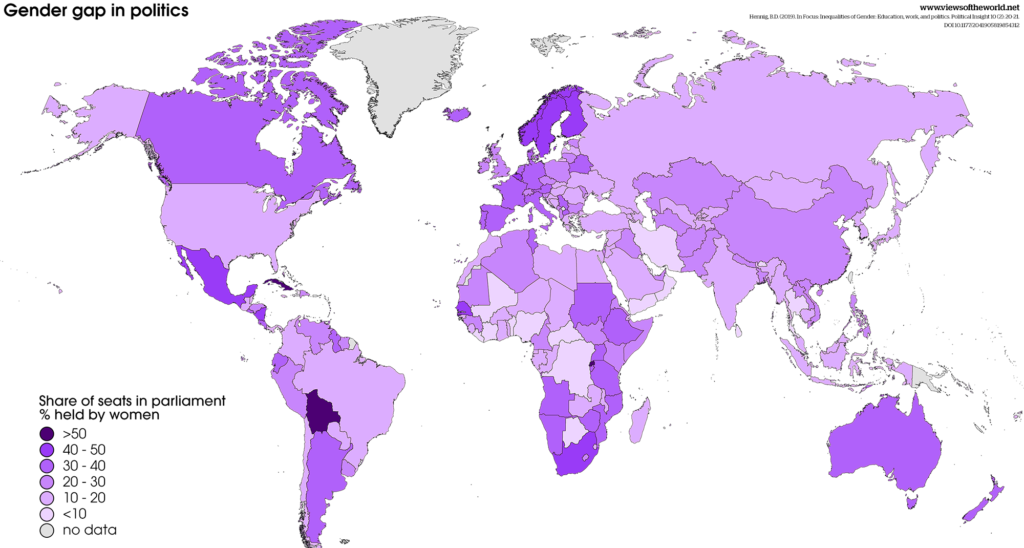Visible and Invisible Inequalities
Over the last five decades, the objective of reducing poverty has overtaken that of reducing inequalities in the countries of the South. Three decades of neoliberal politics have also made us more indifferent, including to some forms of inequality that may be life-threatening.
The renewed attention to economic and social inequalities in the North is timely and welcome. In the South, however, poverty reduction remains the priority, mainly to be achieved through faster growth notwithstanding worsening income and wealth inequalities. Interest in reducing inequalities in the South began to wane half a century ago under the influence of Western aid policies that prioritised basic needs and poverty reduction over measures like land reforms that could both alleviate poverty and mitigate rural inequalities. This indifference has hardened over the years into systemic neglect.
Inequalities, we always knew, diminish human life. The pandemic has revealed something else we always knew, but chose to ignore as trivial: inequalities can be life threatening.The pandemic has revealed something else we always knew, but chose to ignore as trivial: inequalities can be life threatening. In revealing the nexus between discrimination and inequality, Black Lives Matter lifted a veil on hidden inequalities and succeeded to some extent in rewiring our shock reflexes. The stark racial and social differences in COVID mortality may not otherwise have gained the same attention. Racial differences in maternal mortality rates have also recently been in the news. They may not surprise most of us, yet have now a capacity to shock.

Recognising and tackling inequality involves deliberate political choices. There is no reason, a priori, to expect societies to tend towards greater equality. Moreover, decades of neoliberalism have so hollowed out political institutions and norms of accountability even in countries that nominally count as democracies, that there is the risk of new, life-threatening forms of inequality failing to register forcefully enough on our radars.
Take for instance clean air. Developing countries have the worst air quality according to most rankings; 27 of the 30 cities with the highest levels of air pollution are in South Asia. WHO estimates there are 7 million premature deaths worldwide every year from air pollution, which has a disproportionate impact on the relatively poorer inhabitants dwelling in streets and slums, or working outdoors in the toxic air. Historically, the air in rapidly growing industrial cities all over the world has been deadly, often for long periods. So long as rich and poor are forced to breathe the same air, we can reasonably expect the political will for a cleanup. But one may wonder whether or how such will might materialise when the rich are able to live seclude themselves in environment-controlled climate bubbles produced by air purifiers, air filters, and air conditioners.
The privatisation of clean air, with all its consequences for health and morbidity, and its disappearance as a commons may reflect the appalling levels to which inequality can extend. It is not an isolated instance. Many of us would sooner eat sashimi in southern cities than drink water from local taps. Domestic water purifiers affordable to the middle classes have relieved municipal authorities of the obligation to provide clean drinking water. While those who cannot afford water purifiers manage as best they can, the sale of potable water has become a booming business. And at least in Bengaluru, India, where middle-class apartment complexes in some newer neighbourhoods rely on tankers to ferry ground water by road over long distances, a powerful “tanker mafia” was reported to have held up plans for public water supply schemes.
Public healthcare and education have likewise collapsed in many poor countries because the middle classes have fled to private clinics, hospitals and schools, most of which operate for profit. The perverse incentives and effects of “for profit” healthcare are well recognised. For all we know, pervasive microbial antibiotic resistance may well one day turn out to be its most “democratic” legacy. Private schools are, as we know, a slippery slope to inequality of access to university education and employment. Security is another good where privatisation and inequality have gone hand in hand, as the rich retreat into gated communities and the public guardians of law and order vent their thwarted authority on the poor and powerless.
It is hard even in the times of COVID to imagine a dystopian world in which clean air comes at a price. We cannot always trust our social science sensibilities to recognise inequalities. Yet it is a sobering thought that, whether from optimism or a sense of fatalism, we may be prone to normalising outcomes that have been bitterly contested in the past, without fully appreciating all the stakes involved. Consider how historical enclosures of the rural commons tend to be viewed. Restrictions on foraging forests for food, fuel or fodder, grazing on common lands, fishing public streams, etc., deprived the rural poor of their customary rights and aggravated poverty and inequality. As is well-known, this process of enclosure entailed profound consequences for land tenure, ownership, and the emergence of wage labour and agrarian capitalism. But arguments that privatising the commons fundamentally reconfigured our relation to nature, commodified its everyday gifts as a prelude to commodifying and monopolising other essentials of life to foster new relations of power, do not usually receive the consideration they deserve. Such perspectives may, however, help us better recognise and understand a phenomenon like the privatisation of clean air.
We cannot always trust our social science sensibilities to recognise inequalities, many of which we may be unaccustomed by experience to seeing. Black Lives Matter has retaught us the role that power plays in producing, reproducing, displacing, and suppressing inequalities. It has also shown us the ubiquity of denial – just consider what it took for society to acknowledge the reality of discrimination against women or Dalits – and the kind of mobilisations required to render inequalities visible and affirm them as such.
Thomas Piketty and the Inequality Economists
 Thomas Piketty at the reading for Capital in the Twenty-First Century on 18 April 2014 at the Harvard Book Store in Cambridge, Massachusetts.
Thomas Piketty at the reading for Capital in the Twenty-First Century on 18 April 2014 at the Harvard Book Store in Cambridge, Massachusetts.Over the last decade, a vivid scholarly debate over the issue of inequality and its drivers has taken place among economists and attracted a lot of public attention. It includes, most prominently, Thomas Piketty and other French economists such François Bourguignon, Thomas Philippon, Emmanuel Saez and Gabriel Zucman but also Anglo-Saxon scholars such as Anthony Atkinson, Joseph Stieglitz and Branko Milanovic. Piketty landed an Amazon’s best-seller with his book Capital in the Twenty-First Century (2014), in which he argues that welfare states and social policies are the exception in history while the general tendency under capitalist conditions is for inequality to rise as the returns to capital are greater than the general rate of economic growth. Piketty therefore opposed previous theories, such as Simon Kuznets’ U-shape model assuming that under capitalism inequality first rises to subsequently decline with the apparition of redistributive mechanisms and policies. From Piketty’s perspective, the “egalitarian” decades from the 1930s to the 1970s, while constituting an exception, also prove that economic inequality is not predetermined but may be acted upon through political and social measures. Others such as Branko Milanovic have argued for more cyclical approaches to inequality, suggesting that it is sporadically checked by wars, plagues and demographic disruptions that are exogenous to the market.
Further readings:
- Robert H. Wade, “The Piketty Phenomenon and the Future of Inequality”, real-world economics review, no. 69 (7 Oct. 2014): 2–17.
- Mike Savage, “An Interview with Thomas Piketty, Paris 8th July 2015”, Working Paper no. 1, International Inequalities Institute, LSE, September 2015.
Measuring Inequality

Inequality measurement can take many forms. Depending on what kind of inequality is being measured (economic, health, education, etc.), different types of indicators will be used (revenue, wealth, average years of schooling, life expectancy…). Measuring inequality further depends on the units of measurements (individuals, households, tax-paying units, etc.) and the types of entities/groups that are being compared. Measuring inequality across country or regions thus differs from measuring inequality within a given society (e.g., between specific segments of a given population) or between citizens globally.
Gini Index
The most common index to measure economic inequalities in terms of revenue or wealth is the Gini coefficient. It measures the extent to which the distribution of income across a society deviates from a perfectly equal distribution. It is based on the Lorenz curve, which represents the cumulative proportion of the population on the horizontal axis and the cumulative proportion of income on the vertical axis. If one person earned all income (maximum inequality) the Gini coefficient would be equal to 1. If income was shared equally between all, the Gini coefficient would equal 0.
Palma Index (or Ratio Measures)
Ratio measures compare how much revenue or wealth is held by a specific segment of the population as compared to another. They allow to adjust for the Gini index's oversensitivity to changes in the middle of the distribution. The Palma ratio, for instance, measures the share of national income of the top 10% compared to that hold by the lower 40%. In more equal societies this ratio will be 1 or below but in very unequal societies it might go up to 7.
Theil Index
Theil indexes, finally, measure inequality in terms of how wealth or revenue is spread among different regions (e.g. urban and rural).
For further reading:
- UNDESA, Inequality Measurement, Development Issues no 2, 21 October 2015
- GSDRC, “Measuring Inequality”
Debate on Inequality and the Social Contract

Liberty and equality entertain an uneasy and fraught relationship. How to reconcile the two has been one of political theory’s central quandaries. Proponents of radical approaches to political equality such as Rousseau have argued that equality may only come at the prize of providing a narrow – or positive – definition of freedom. An approach that has also been applied by the French revolutionaries who, most notably during the Reign of Terror (1793–1794), applied a strict definition of what it meant to be free under republican conditions. Liberal proponents, on the other hand, have preferred a negative approach to freedom – privileging being free over being equal – by confining equality to law and reserving freedom to the private realm of individual expression. The radical impetus of equating being free to being equal may thus be opposed to the liberal impetus of equating being free to being different.
Political philosophers have further debated on whether inequality stems from history – or, as Rousseau suggests in his Second Discourse, from civilisation – and thus depends on human intervention or whether it is an inalterable anthropological constant. Liberals have argued the former, insisting that while inequality remains the norm in nature, it is mankind’s role to tame it through policies and laws (e.g., social contracts). Sociologists such as Gaetano Mosca and Robert Michels have come to the more sobering conclusion that elites are a quasi-permanent fixture of human societies and that, eventually, a minority of actors would come to dominate all political systems, even democracies. John Rawls, finally, proposed an elaborate theory of social justice arguing that the social contract needs to guarantee at once fundamental rights to individuals, equality in terms of opportunities, and that economic inequality is justified only to the extent that it serves to improve the lives of the worst off through redistributive mechanisms.
For further reading:
Jeff Manza, “Political Inequality”, in Emerging Trends in the Social and Behavioral Sciences, ed. Robert Scott and Stephen Kosslyn (John Wiley & Sons, Inc., 2015): 1–17.










